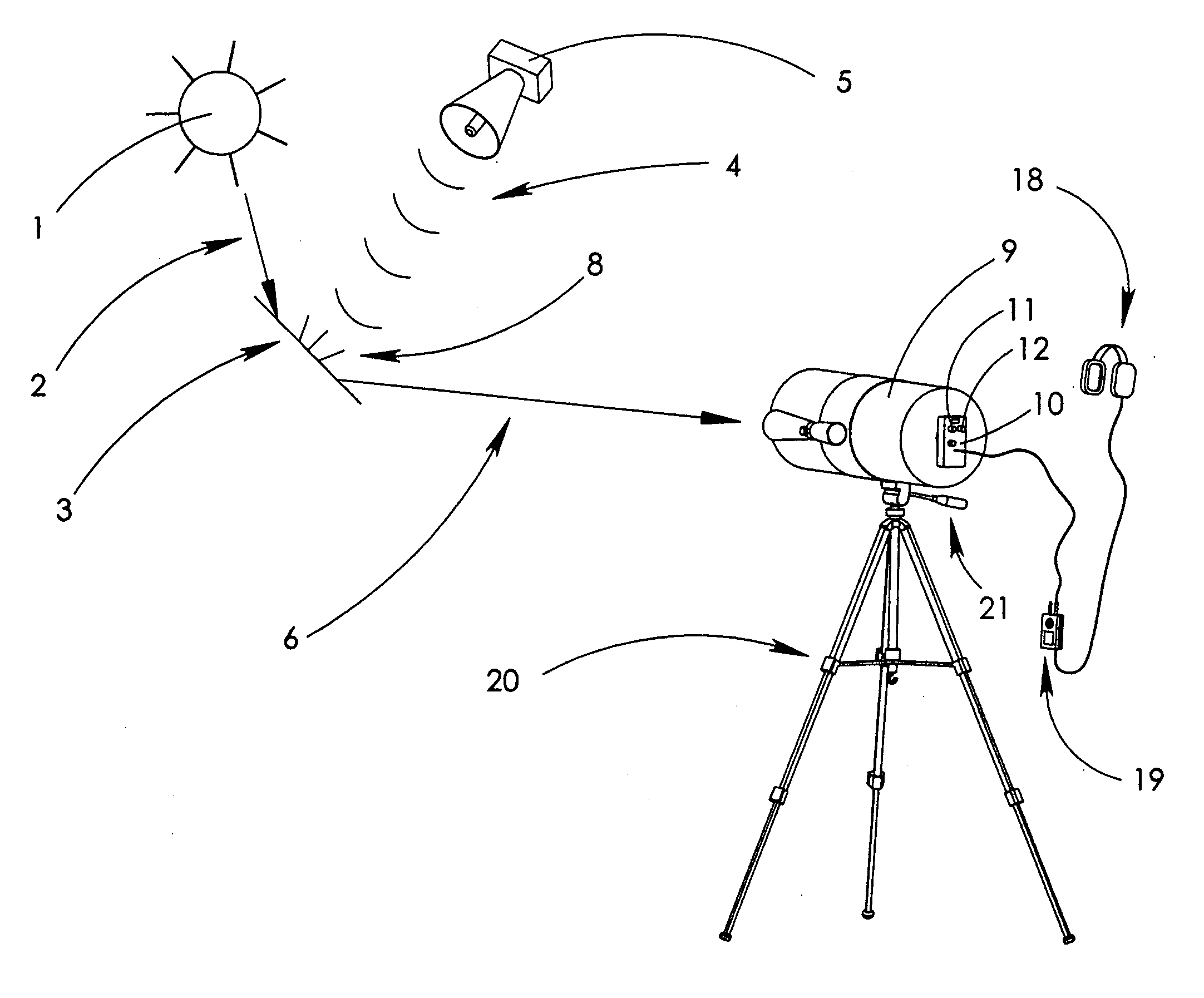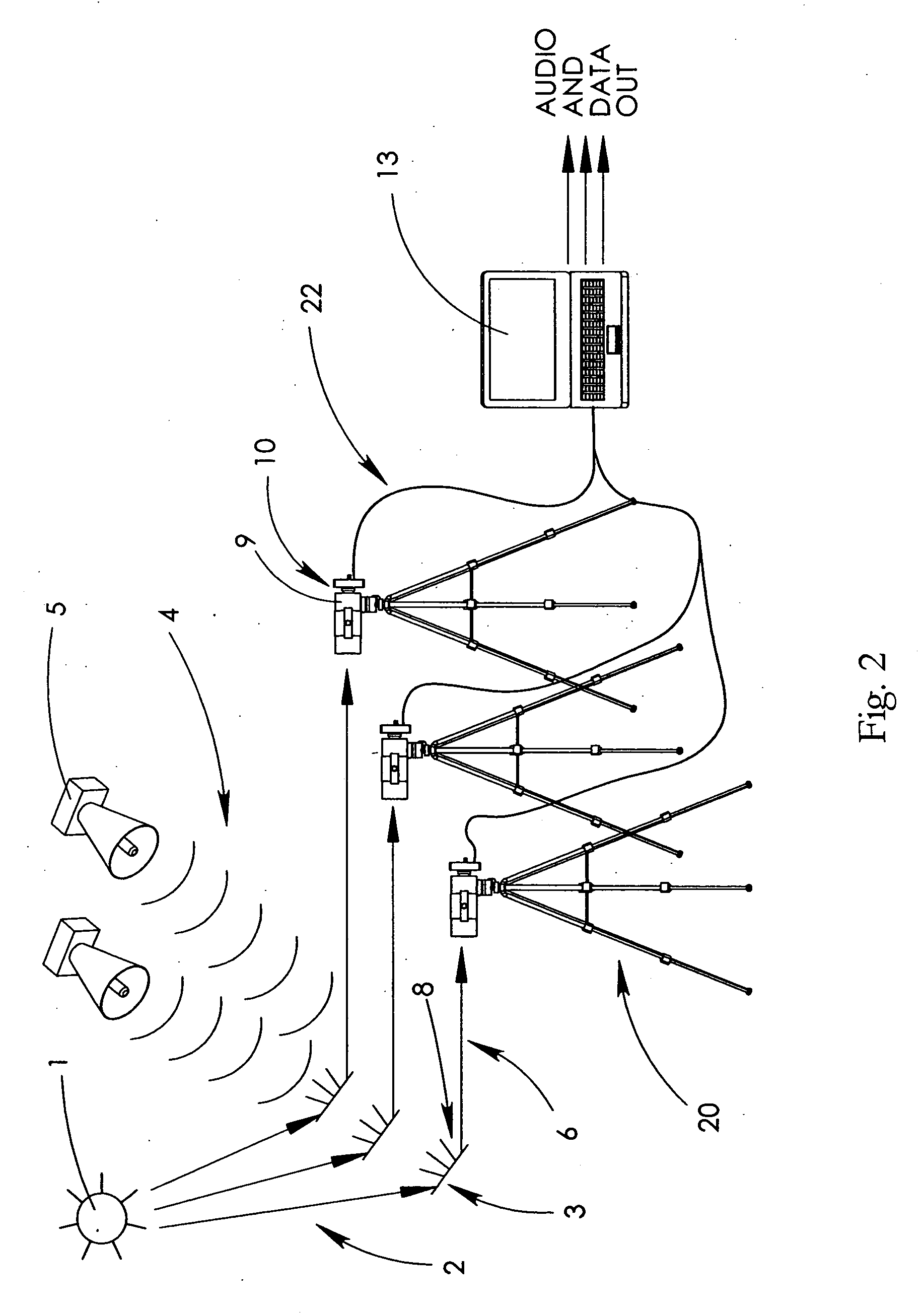Passive long range acoustic sensor
- Summary
- Abstract
- Description
- Claims
- Application Information
AI Technical Summary
Benefits of technology
Problems solved by technology
Method used
Image
Examples
Embodiment Construction
[0036]A simple embodiment of the Passive Long Range Acoustic Sensor, as shown in FIG. 1, is basically a receiver system and is comprised essentially of a telescope (9), a photosensitive element (10), an amplifier (11), a filter (12), and a listening means (18) or recording means (19), or both said means (18 and 19). The telescope (9) collects the light (6) from a glint (8) associated with a distant acousto-optical modulator (3) and focuses it onto a photosensitive element (10) located on the focal plane of the telescope (9). Throughout this specification and its appended claims, the term photosensitive element (10) is intended to be broadly construed, and is also intended to include one or more photodiodes, photodetectors, photosensors, pixels, or film, or a combination thereof, particularly for some of the multi-channel embodiments of this invention disclosed below. The photosensitive element (10) converts the incident light (6) from the telescope (9) into a weak electrical signal ...
PUM
 Login to View More
Login to View More Abstract
Description
Claims
Application Information
 Login to View More
Login to View More - R&D
- Intellectual Property
- Life Sciences
- Materials
- Tech Scout
- Unparalleled Data Quality
- Higher Quality Content
- 60% Fewer Hallucinations
Browse by: Latest US Patents, China's latest patents, Technical Efficacy Thesaurus, Application Domain, Technology Topic, Popular Technical Reports.
© 2025 PatSnap. All rights reserved.Legal|Privacy policy|Modern Slavery Act Transparency Statement|Sitemap|About US| Contact US: help@patsnap.com



